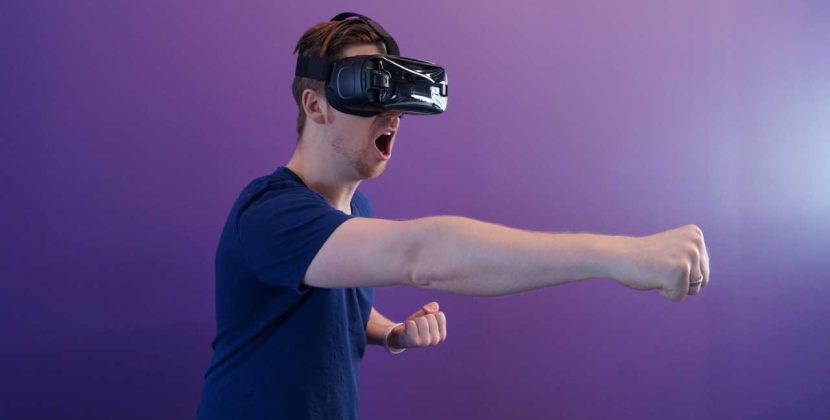
Introduction to Virtual Reality
Virtual Reality (VR) is a rapidly evolving technology that is transforming the way we experience and interact with digital content. It is a simulated environment that can be similar to or completely different from the real world, which users can explore and interact with using specialized hardware and software. VR has gained significant attention in recent years for its potential to revolutionize various industries, from gaming and entertainment to education, healthcare, and beyond.
History of Virtual Reality
The concept of virtual reality dates back to the 19th century, with early prototypes and experiments in the field of stereoscopic viewing and panoramic displays. However, it not until the mid-20th century that significant advancements were made in the field of VR. In the 1960s, Ivan Sutherland developed the first head-mounted display (HMD), which paved the way for the development of modern VR headsets. In the 1980s and 1990s, VR gained popularity in the gaming industry, but it was limited by high costs and technological limitations. However, with the recent advancements in computing power, graphics, and display technologies, VR has become more accessible and immersive than ever before.
How Virtual Reality Works
Virtual Reality relies on a combination of hardware and software to create an immersive and interactive virtual environment. The key components of a VR system include a headset, which is worn on the head and tracks the user’s head movements and sometimes eye movements, and hand controllers or other input devices for interacting with the virtual environment. These devices are usually connected to a powerful computer or a gaming console that generates the virtual content and renders it in real-time. The user’s movements and interactions in the real world are translated into the virtual environment, creating a sense of presence and immersion.
Applications of Virtual Reality
Virtual Reality has a wide range of applications across various industries. In gaming and entertainment, VR has transformed the way we experience video games, providing an unparalleled level of immersion and interactivity. VR is also being used in training and simulations, allowing users to practice skills and scenarios in a safe and controlled environment, such as flight simulations for pilots or surgical simulations for medical professionals. In the field of healthcare, VR being used for pain management, mental health therapy, and rehabilitation. VR is also being used in architecture and design, allowing architects and designers to create virtual walkthroughs of buildings and spaces before they are constructed. Additionally, VR has been used in education to provide immersive learning experiences, in virtual tourism to explore distant places, and in social VR to connect with people from around the world.
Benefits and Challenges of Virtual Reality
Virtual Reality offers several benefits, including enhanced immersion, interactivity, and experiential learning. It has the potential to transform industries by creating new opportunities for innovation and disruption. VR can also improve safety by allowing users to practice dangerous tasks in a virtual environment without real-world consequences. Moreover, VR can provide access to experiences that may be otherwise impossible or impractical, such as exploring distant planets or traveling through time.
However, there also challenges associated with VR. The cost of entry for high-quality VR systems can be prohibitive for some users, limiting its accessibility. VR can also cause discomfort or motion sickness in some users due to the discrepancy between the user’s physical movements and the virtual environment. There are also concerns about privacy and data security, as VR systems can collect sensitive data about users
such as their movements, interactions, and personal information. Additionally, there are ethical considerations surrounding the use of VR in areas such as therapy, education, and social interactions, as the lines between reality and virtual reality can sometimes blur.
The Future of Virtual Reality
Despite the challenges, the future of Virtual Reality looks promising. As technology continues to advance, VR expected to become more accessible, affordable, and immersive. The development of standalone VR headsets that do not require a computer or gaming console, well as advancements in haptic feedback and motion tracking technologies, making VR more user-friendly and appealing to a wider audience. addition, the integration of VR with other emerging technologies such as artificial intelligence, augmented reality, and the Internet of Things (IoT) is expected to create new opportunities for innovation and expansion of VR applications.
terms of industry applications, VR is expected to revolutionize fields such as gaming, education, healthcare, architecture, and social interactions. In gaming, VR is likely to continue to push the boundaries of immersive gaming experiences, with more realistic graphics, haptic feedback, and interactive gameplay. education, VR can provide students with hands-on learning experiences, virtual field trips, and simulations to enhance their understanding of complex concepts. healthcare, VR can used for training medical professionals, pain management, and mental health therapy. architecture, VR can enable architects and designers to create virtual walkthroughs of buildings and spaces for better visualization and decision-making. In social interactions, VR has the potential to transform the way we connect with others, allowing people from different parts of the world to meet and interact in virtual spaces.
Embracing the Virtual Frontier
Virtual Reality is a game-changing technology that is transforming the way we experience and interact with digital content. It has the potential to revolutionize various industries and create new opportunities for innovation and disruption. Despite the challenges, VR is rapidly advancing, becoming more accessible, affordable, and immersive. As we continue to embrace the virtual frontier, it is important to address the ethical, privacy, and security concerns associated with VR and ensure that it developed and used responsibly.
conclusion
Virtual Reality is a rapidly evolving technology that has the potential to revolutionize various industries and transform the way we experience and interact with digital content. With advancements in hardware, software, and computing power, VR is becoming more accessible, immersive, and user-friendly. Despite challenges, VR offers numerous benefits in gaming, education, healthcare, architecture, and social interactions. As we continue to embrace the virtual frontier, it is crucial to address ethical, privacy, and security concerns associated with VR and ensure responsible development and use. Virtual Reality poised to unlock new realms of experiences and reshape industries, paving the way for an exciting future in the digital world.












